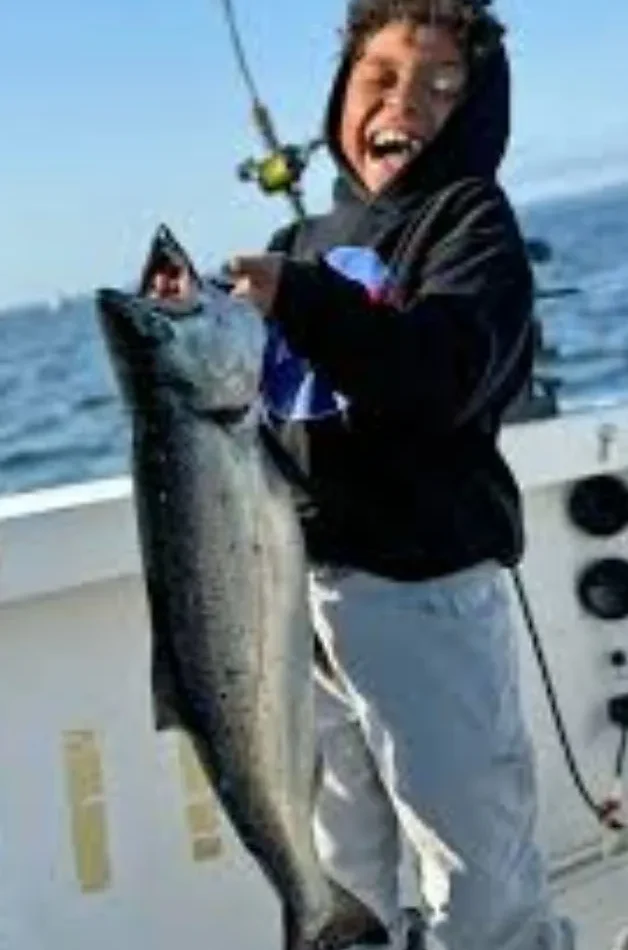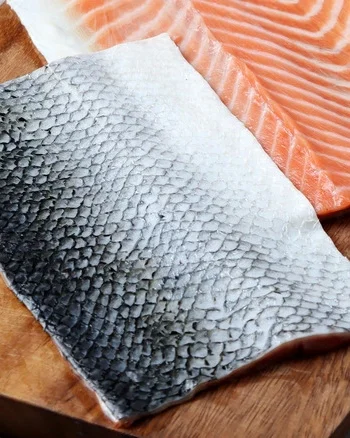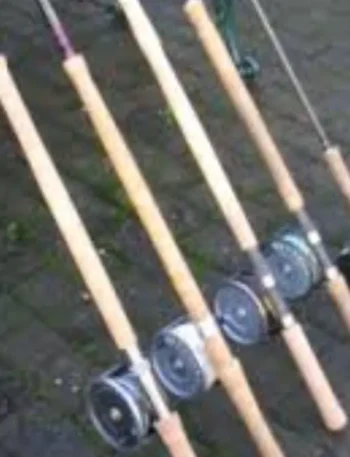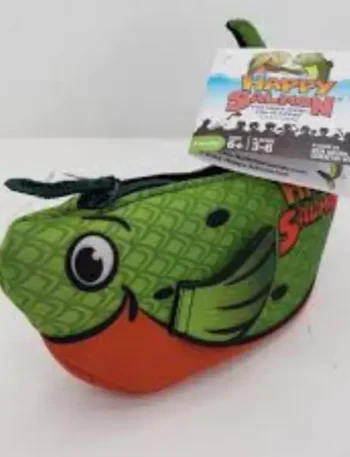Salmon fishing gear isn’t just equipment—it’s your secret weapon in the wild game between angler and fish. Whether you’re standing knee-deep in a misty river at dawn or trolling through the salty spray of the open sea, having the right gear can mean the difference between an unforgettable catch and a frustrating near-miss. Salmon are strong, smart, and relentless—so your gear needs to be tougher and smarter.
Imagine hooking into a 30-pound Chinook, only to lose it because your rod couldn’t handle the weight or your line snapped under pressure. Painful, right? That’s exactly why investing in the right salmon fishing gear from the start is not just smart—it’s essential. From rods and reels to bait and boots, each piece of your setup plays a vital role in helping you land that trophy fish.
In this complete guide, we’ll walk you through everything you need to know about salmon fishing gear—no fluff, no filler. Whether you’re a total beginner or looking to upgrade your kit, you’ll find expert tips, honest recommendations, and battle-tested advice to gear up like a true salmon hunter.
Table of Contents
What Gear Do You Need for Salmon Fishing?
Quick Overview of Essential Salmon Fishing Equipment
- Salmon fishing rod (medium-heavy)
- High-quality spinning or baitcasting reel
- 20–30 lb test line (braided or mono)
- Assorted lures and baits (spinners, spoons, roe)
- Sharp hooks and sturdy rigs
- Chest waders, net, pliers, and tackle box
Why the Right Gear Matters for Success
Using the wrong gear can lead to lost fish, broken lines, and wasted time. Salmon are strong fighters, and you need gear built to handle them. Proper gear improves your casting accuracy, hook-up rate, and fish landing success.
Fishing Rods for Salmon
Best Rod Lengths for Salmon Fishing
The ideal rod length for salmon fishing is 8 to 10 feet. Longer rods allow better casting distance and control, especially when fishing in rivers or from shore.
Action and Power Ratings Explained
- Medium-Heavy Power: Strong enough for big salmon
- Moderate to Fast Action: Allows for better hooksets and control
Power = strength, Action = bend response. Choose wisely based on your location and salmon species.
Spinning vs Casting Rods – Which One is Better?
- Spinning Rods are great for beginners – easier to use and cast light lures
- Casting Rods provide better control for heavy lures and strong fish
Choose spinning for convenience, casting for control and power.
Fishing Reels for Salmon
Choosing the Best Reel for Salmon Fishing
Go for a reel with a smooth drag, durable body, and corrosion resistance.
Spinning reels (size 3000–5000) are most common, but baitcasters are also used in strong currents.
Drag Systems and Gear Ratios – What You Should Know
- A good carbon drag system prevents line breaks
- Gear ratio around 5.2:1 or 6.2:1 balances power and speed
Fast retrieve helps with active salmon in rivers.
Fishing Line for Salmon
Monofilament vs Braided Line for Salmon
- Braided Line (30–50 lb) is stronger, more sensitive, and better for heavy cover
- Monofilament (15–25 lb) is more forgiving and stretches, great for beginners
Many anglers use braided with a mono or fluorocarbon leader.
Best Line Strength (Pound Test) for Salmon Fishing
Use at least 20–30 lb test for mature salmon. Ocean salmon may need even stronger lines.
Salmon Fishing Hooks and Rigs
Types of Hooks – Single, Treble, and Circle
- Single Hooks: Easier to remove and better for catch-and-release
- Treble Hooks: Good for aggressive fish on lures
- Circle Hooks: Ideal for bait fishing with minimal harm
Best Rigs for River and Ocean Salmon
- Slip Float Rigs for drift fishing
- Bottom Bouncers for deep water
- Plug Rigs with treble hooks for trolling
Salmon Fishing Bait and Lures
Top Natural Baits for Catching Salmon
- Salmon roe (eggs) – #1 bait
- Shrimp
- Herring (for ocean fishing)
- Sand shrimp or nightcrawlers in freshwater
Best Artificial Lures – Spinners, Spoons, and Plugs
- Spinners: Vibrant and flashy, ideal for river current
- Spoons: Mimic injured baitfish
- Plugs: Dive deep and rattle to attract aggressive strikes
Essential Accessories for Salmon Anglers
Waders and Boots for Cold Water Fishing
Chest waders and waterproof boots are essential for river and stream fishing. Go for insulated gear if fishing in colder months.
Tackle Boxes, Nets, and Pliers
A solid tackle box helps organize your gear.
Rubber landing nets are fish-friendly.
Pliers are vital for hook removal and cutting line.
Best Places to Use Your Salmon Fishing Gear
Freshwater vs Saltwater Locations
- Freshwater: Rivers and streams (ideal for spawning salmon)
- Saltwater: Coastal areas and bays (pre-spawn salmon)
Rivers, Lakes, and Coastal Fishing Tips
Fish early morning or late evening.
Look for deep pools, eddies, and undercut banks.
In coastal zones, troll with bait or flashy lures.
How to Maintain Your Salmon Fishing Gear
Cleaning and Storing Tips
- Rinse reels and rods with fresh water
- Dry gear before storing to avoid corrosion
- Oil moving parts regularly
Seasonal Maintenance Checklist
- Check line for damage
- Replace old hooks
- Inspect rod guides for wear
Salmon Fishing Gear for Beginners vs Pros
Budget Gear Recommendations
Start with a combo rod-reel kit around $100
Add essential lures and accessories gradually.
Upgrading as You Gain Experience
Upgrade to custom rods, high-end reels, and specialized lures as your technique improves.
Legal and Ethical Considerations
Fishing Licenses and Regulations
Always check local laws and seasons. Fishing without a license can lead to heavy fines.
Catch-and-Release vs Keep Practices
Handle fish gently. Use barbless hooks if releasing.
Follow bag limits and support sustainable fishing.
Pro Tips to Improve Your Catch Rate
Time of Day and Weather Conditions
Early morning = best time
Overcast skies = better bite
Avoid hot midday sun
Reading Water Currents and Salmon Behavior
Watch for jumping salmon or water disturbances.
Fish slow-moving pockets in strong current areas.
Conclusion
When it comes to salmon fishing, gear matters—big time. With the right combination of rod, reel, line, bait, and accessories, your chances of landing that trophy salmon shoot way up. Whether you’re a weekend angler or a dedicated fishing pro, having the right salmon fishing gear is the key to success. Invest smart, fish responsibly, and always keep learning.
FAQs About Salmon Fishing Gear
What is the best type of reel for salmon fishing?
A spinning reel (size 3000–5000) with a smooth drag is ideal for most salmon fishing conditions.
Do I need special bait for salmon?
Yes. Salmon roe, shrimp, and herring are top natural baits. Spinners and spoons work great as artificial options.
How much should I spend on salmon fishing gear as a beginner?
You can start with a quality combo setup for around $100 to $150, including basic accessories.
What pound test line should I use?
Use at least a 20–30 lb test line for adult salmon, especially in strong currents.
Can I use the same gear for both river and ocean salmon fishing?
Some gear overlaps, but ocean setups often need heavier rods, reels, and saltwater corrosion resistance.





